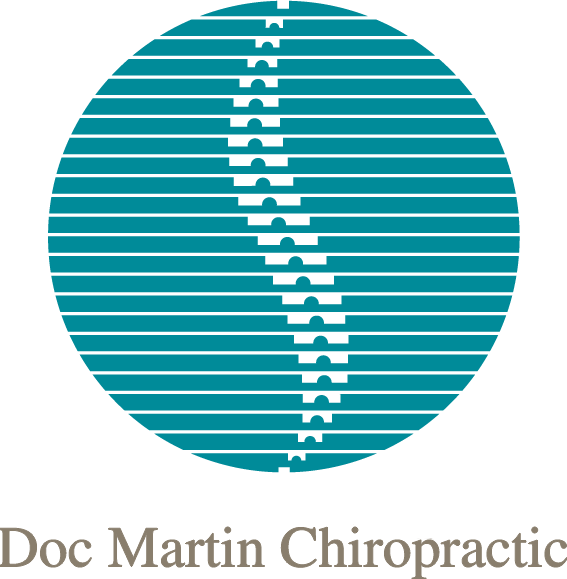
You’re scared to death to step foot into a chiropractor’s office.
Why?
Because you’ve heard those “chiropractic adjustments” hurt!
Or, even worse, you’ve experienced a painful spinal adjustment
yourself. Didn’t like that. Snuffed out your desire to ever go again.
In fact, the last thing you want is someone messing around
with your already hurting low back, neck, or whatever else hurts!
OUCH!
Sounds like more pain on top of pain. Right? No, thanks!
Psst! I’ll let you in on a not-so-secret secret that chiropractors
don’t talk about much.
You’re right.
Sometimes chiropractic adjustments DO HURT!
Straight From a Chiropractor’s Mouth
How do I know that chiropractic adjustments sometimes hurt?
Firsthand experience. Both as a well-seasoned chiropractor AND
as a crackerjack chiropractic patient!
And, just between you and me (shhhhh!), I’ve had my share of
painful adjustments.
But wait a sec! I’ve also experienced more
than my share of excellent, effective spinal
adjustments, executed with such expertise
that you can barely feel them.
Painless chiropractic adjustments do exist. Truly!
I happen to prefer those kinds of adjustments (painless), but not everyone
is like me. No surprise there.
The trick is finding just the right chiropractor who uses those
methods of adjusting that you prefer. (Click here for tips on how
to find the right chiropractor for you.)
Different Chiropractors, Different Adjustments
Chiropractors share one common goal: to help you live pain
free by improving your whole spine’s function and mobility, as
well as boosting your energy and vitality.
Doctors of Chiropractic reduce or eliminate the ache, pain,
and/or stiffness in your low back, between your shoulders,
neck, hip, legs, head, etc., by “adjusting” your spine and
other related areas.
To accomplish this goal, they use a variety of “adjusting methods.”
While all methods of adjusting can be effective for certain people
with certain spinal related pain and symptoms [click here], some
methods are known as “low force” adjustments and others
“high force” adjustments.
Low Force Adjustments vs. Higher Force Adjustments
Low force adjustments are typically administered with specific
adjusting instruments. Low force adjusting techniques are known
for being gentle, usually painless. [click here]
Higher force adjustments, tending to be more rigorous, are delivered
with the chiropractor’s hands.
Both low force and higher force adjusting can be equally effective.
It boils down to finding the chiropractor who
uses the chiropractic methods that you not
only prefer, but also give you noticeable,
satisfying results in reasonable time!
Higher Force Adjustments
Some people prefer higher force adjustments which usually cause
a “popping” or “cracking” sound.
Does more force = a more painful adjustment? Maybe. Maybe not.
Depends on three variables:
1. The Doctor of Chiropractic.
Is the chiropractor experienced and well trained? Is he or she
highly skilled at delivering higher force adjustments by hand,
causing minimal pain or discomfort?
Are you happy with the results?
2. You.
Can you relax in the hands of the chiropractor when receiving
an adjustment? Do you have a high or medium tolerance to pain?
Are you more sensitive to pain?
If an adjustment is a little uncomfortable or even painful for a
moment, is that okay with you IF it “gets the job done”?
3. How much do you hurt?
If you’re experiencing excruciating low back pain, making it
difficult to walk, sit, or even lie in bed comfortably, even
the slightest movements by the Chiropractor,
whether a higher or lower force doctor, could cause a
momentary jump in pain.
Same with agonizing neck pain or middle back pain.
Nonetheless, the huge benefit of pain relief from a chiropractic
adjustment may outweigh the risk of momentary discomfort
caused from an adjustment.
Lower Force Adjustments
Early on in practice, I experienced one of those pain-to-almost-no-pain
chiropractic miracles.
In less than a minute, a chiropractor, using a painless adjustment, gave me
instant relief from my two-week stint of crippling, lower back pain.
I was shocked.
That transformational event spurred me to learn and master that
painless, low force adjusting technique for low back pain [click here],
as well as other low force adjusting techniques for the entire
spine and other joints, such as knees, shoulders, elbows.
Using a combination of these techniques, I
tailor each adjustment for each person and
his or her low back pain or neck pain and
other spine-related problems.No two adjustments are exactly alike.
Loving Low Force Adjusting
Whether I’m the chiropractor giving low force chiropractic adjustments
or the patient receiving low force chiropractic adjustments, what
I love about low force chiropractic methods of adjusting is:
1. Whether standing, sitting, or lying down, you (the patient) remain
comfortable and relaxed during the entire session of adjustments.
You feel no quick, twisting, or jerky motions. You don’t hear or
feel any popping or cracking sounds or sensations. [click here]
2. Most people feel no pain from lower force chiropractic adjustments
themselves. Sometimes you feel only mild tenderness in muscles
and soft tissue when the chiropractor palpates areas of complaint
with her fingers.
3. Handheld, highly effective, precision instruments perform, without
causing pain, almost all the spinal adjustments.
Easy on the patient–you! Easy on the chiropractor–me!
Using these methods of adjusting, even as a lighter-weight woman, I
can deliver extraordinarily effective adjustments just as smoothly to
big, brawny men [check this guy out] as I can to the smallest of babies.
4. Most importantly, these low force adjustments
are incredibly effective for almost everyone who
walks through my door.An overwhelming majority of people feel better
within a few adjustments, and often feel a
noticeable difference after just one.
Do Lower Force Adjustments Trump Higher
Force Adjustments?
Not at all!
I’ve been around the chiropractic block a time or two.
And the bottom line:
Some folks prefer higher force spinal adjusting and get
excellent results from their chiropractor.
Others prefer lower force spinal adjusting and get excellent
results from their chiropractor.
However, judging from my own personal experience of giving and
receiving chiropractic adjustments, lower force adjustments are
typically more comfortable for the patient.
Simple fact.
So, if you’re a little skittish about chiropractic adjustments being
painful, you may want to seek a chiropractor who uses gentle,
lower force techniques that may work great for you. [click here]
If you’ve never been to a chiropractor, there are enough unknowns
without the added worry or fear that an adjustment (whatever that
means, right?) may be painful.
If you’re okay with a little extra, momentary discomfort, get a raving review and
go for it!
A Chiropractor’s Personal Experience with Adjustments
Over the years, I’ve been adjusted by many chiropractors using
many different adjusting techniques, both higher and lower force.
Sometimes a higher force adjustment (although not my first preference),
delivered by a highly skilled chiropractor, has worked beautifully for me.
On the other hand, I’ve been in situations when a chiropractor, using
one particular low force technique, didn’t help me at all.
I’d rather go to a great chiropractor who can
deliver precise, excellent adjustments regardless
of whether he or she uses high force or low force
techniques.
Even if a spinal adjustment happens to cause a moment of pain, I’m totally
okay with that if I’m blessed enough to experience that pain-to-no-pain
chiropractic miracle!
Remember, chiropractors, like all healthcare
professionals, are not one size fits all.
If one chiropractor doesn’t work for you, for whatever reason, don’t give up.
The right chiropractor for you may be right around the corner!
